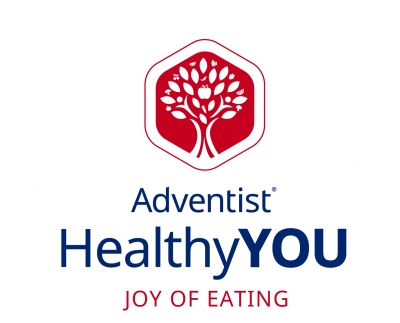More Than We Realize
Contributed by Angeline D. Brauer, DrPH, MHS, RDN
Celebrate National Nutrition Month® and a focus on a beautifully balanced diet.
Each year, dietitians and nutritionists rejoice during the month of March for National Nutrition Month®. It’s our opportunity to get a bit of the spotlight and focus on the importance of a healthy eating plan. The theme for 2024, in a campaign provided by the Academy of Nutrition and Dietetics, is “Beyond the Table.”
With this theme, we are encouraged to consider what happens to our food and drinks before and after they reach our tables. Also, what are we consuming while not at a table, such as in the car, on a hike, snacking on the run between meetings or classes, or when lounging on the sofa. Are we truly fully aware of what we are putting into our magnificently designed bodies?
From the growing body of evidence, we can now say that what we consume affects much more than we previously realized. For instance, the interaction between our genes and the nutrients we eat, a field called nutritional genomics, has grown in the last few decades.[1] We also understand more, though admittedly not all, about how the foods we eat impact the gut microbiome and consequently our immune system.[2] And the role of nutrition in mental health-related concerns is certainly gaining ground, including it’s role in recovery from substance use disorders.[3, 4] Adding more to the diverse conversation is the data demonstrating the carbon footprint and environmental impact of various eating patterns.[5]
In spite of these advances in scientific knowledge, the average person tends to have a low understanding of nutrition. In general, only about 15% of US adults are able to accurately evaluate the quality of their diet, and 75% tend to over-estimate the health of their diet.[6]

This article is part of the Joy of Eating Club resources. Click on the logo to go to the Club page for more resources.
Tools to Help
Like much else in life, there is not a “one size fits all” approach to our diet. Clinical dietitians recognize this when prescribing a diet for the patients under their care. And even when offering nutrition information to a group of individuals, such as is often done in churches, it’s so important to know the specific needs and challenges of that particular population group. And great care must be taken that we don’t become “prescriptive” in our educational efforts.
Thankfully, there are several tools available to help share the broad concepts of healthy eating, and which can be applied across much of the population. Here are a few:
- MyPlate is offered by the United States Department of Agriculture and focuses on five food groups: fruits, vegetables, grains, protein, and dairy (including fortified plant-based alternatives).
- The Government of Canada provides a similar version, but advises to “make water your drink of choice.”
- The Nutrition Circle from the German Society for Nutrition states that “a healthy and environmentally friendly diet is more than ¾ plant-based and almost ¼ animal-based.” They include eggs, milk and dairy products under the animal-based grouping.
- The Dietary Guidelines for the Brazilian Population is built around the framework of five principles of healthy eating rather than food groups:
- Diet is about intake of nutrients, in the form of food items, and eaten as meals within cultural and social contexts.
- Dietary recommendations should adapt to changes in food supplies and needs of the community.
- Healthy diets include consideration of sustainable methods of food production and distribution.
- Different sources of evidence help to inform the value of our dietary choices.
- Recommendations should empower individuals and communities to make the healthiest decisions for themselves and their families.
Numerous other countries have their own versions that are culturally contextualized, and which can be helpful when working with various ethnic communities. Some organizations have also developed their own versions, including:
- The Healthy Eating Plate by the Harvard TH Chan School of Public Health
- The Power Plate by the Physicians Committee for Responsible Medicine
- The Vegetarian Plate by the General Conference Nutrition Council
Digital tools are also available to help move towards a healthier diet, such as the Daily Dozen app by NutritionFacts.org and Start Simple with MyPlate by the USDA.
When making major changes in diet, especially for young children, pregnant women, and the elderly, it’s important to speak with your healthcare provider. Anyone with an underlying health condition should particularly be cautious since foods can interact with and potentially interfere with treatments.[7] And consulting with a registered dietitian, which is often covered by health insurance for certain health conditions, can make the difference in achieving better health outcomes.[8,9,10]
Importance of Food
The importance of food, however, truly is not a new concept. Consider how frequently diet-related terms appear in the Bible (King James Version):
- “food” — 48 times
- “eat” “eaten” and “eating” — 734 times
- “drink” “drinketh” and “drinking” — 364 times
- “meat” and “meats” — 281 times (mostly in relation to meat offerings)
We also find numerous stories where food and/or drinks plays a critical role in the storyline:
- Adam & Eve, Genesis 3
- Noah, Genesis 9
- Esau and Jacob, Genesis 25
- Israelites in the wilderness, Numbers 11
- David fleeing in exile, 1 Samuel 21
- David and Abigail, 1 Samuel 25
- Elijah and the ravens, 1 Kings 17
- Woman of Zarephath, 1 Kings 17
- Daniel in Babylon, Daniel 1
- Temptation of Christ, Matthew 4
- Christ at the wedding feast, John 2
- Christ feeding the multitudes, Matthew 14 and 15
- The last supper, Matthew 26
- Christ reveals Himself after the resurrection, Luke 24; John 21
Per the Biblical account, eating was a gift given by God at creation (Genesis 1:29, 30), was celebrated by Christ on earth, was a part of communal life of the early Christian church (Acts 2:46), and will be part of life in the re-created world (Revelation 19:9; 22:2).
Perhaps this is one reason why there exists so much debate and confusion regarding nutrition and diet? There are many intricacies and nuances when we think about the physiology of how what we consume affects our bodies. We can certainly fall into pits or trail off into rabbit holes. And with the unfortunate low level of nutrition knowledge among the general population, as mentioned earlier, it’s no surprise that fad diets and extremes gain a foothold. I can’t help but wonder about who is the one most pleased about this situation — the destroyer or the Redeemer (John 10:10). To help think through some of these issues, you will enjoy reading our Joy of Eating series of articles.

A Savor of Life
Our nutritional choices has a special meaning to those of the Seventh-day Adventist faith community. Since the 1860’s this Christian denomination has maintained a special place in our teachings for the importance of what we eat and all the various situations that impact, and are impacted by, our food choices. It is recognized as one piece of a larger puzzle that has bearing on our health experiences. And though much focus has been given to the topic of diet, perhaps we still are learning how very precious a gift it is.
And as we’ve seen from a brief look at recent literature, what and how we eat affects much more than what we realized. It is a topic that has only grown in importance and relevance, and the need for balanced, wholistic nutrition education continues to plead for our attention.
The example of the Apostle Paul is worth considering in this context:
Paul carried with him the atmosphere of heaven. All who associated with him felt the influence of his union with Christ. The fact that his own life exemplified the truth he proclaimed, gave convincing power to his preaching. Here lies the power of truth. The unstudied, unconscious influence of a holy life is the most convincing sermon that can be given in favor of Christianity. Argument, even when unanswerable, may provoke only opposition; but a godly example has a power that it is impossible wholly to resist.[11]
So as we wind down National Nutrition Month® and consider how much more complex, nuanced, and precious is our dietary choices, let’s also keep in mind that one of the best outcomes to this focus on food is our re-focusing on our God.

References
-
Franzago, M et al. Genes and diet in the prevention of chronic diseases in future generations. Int J Mol Sci 2020, 21,2633
-
Zhang, P. Influence of Foods and Nutrition on the Gut Microbiome and Implications for Intestinal Health. Int J Mol Sci 2022, 23,9588. https://doi.org/10.3390/ ijms23179588
-
Grajek, M et al. Nutrition and mental health: a review of current knowledge about the impact of diet on mental health. Front Nuts 9:943998. doi: 10.3389/fnut.2022.943998
-
Jeynes KD, Gibson EL. The importance of nutrition in aiding recovery from substance use disorders: A review. Drug Alcohol Depend. 2017 Oct 1;179:229-239. doi: 10.1016/j.drugalcdep.2017.07.006. Epub 2017 Aug 4. PMID: 28806640.
-
Dixon, KA et al.. Modern diets and the health of our planet: an investigation into the environmental impacts of food choices. Nutrients 2023,15,692. https://doi.org/ 10.3390/nu15030692
-
Thomson, JL et al. Can United States adults accurately assess their diet quality? A J Health Promotion. 2023;37(4):499-506. doi:10.1177/08901171221137056
-
D’Alessandro C et al. Interactions between food and drugs, and nutritional status in renal patients: a narrative review. Nutrients 2022 Jan 4;14(1):212. doi: 10.3390/nu14010212. PMID: 35011087; PMCID: PMC8747252.
-
Dobrow L. Potential Effectiveness of Registered Dietitian Nutritionists in Healthy Behavior Interventions for Managing Type 2 Diabetes in Older Adults: A Systematic Review. Front Nutr 2002 8:737410. doi: 10.3389/fnut.2021.737410
-
Hickson, M et al. Impact of a dietitian in general practice: care of the frail and malnourished. J Human Nutr and Dietetics 2022 Feb; 35(1):145-153. doi: 10.3389/fnut.2021.737410
-
Zeman, H. Improved long-term outcomes in high-risk patients receiving registered dietitian nutritionist care. Endocrine and Metabolic Science, 2021:100078. https://doi.org/10.1016/j.endmts.2021.100078.
-
White, E.G. (1911) The Acts of the Apostles. Mountain View, CA: Pacific Press Publishing Association, p. 510.

Leave A Comment